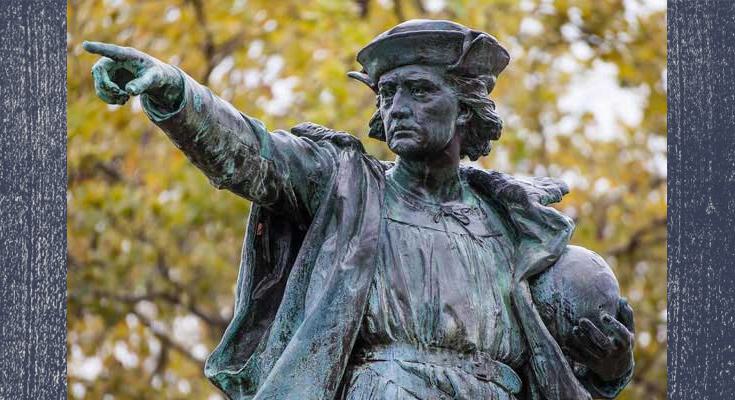By Brandon Moseley
October 11 is a federal and state holiday honoring the achievements of Christopher Columbus. Banks, government offices, many schools, and some businesses will be closed today in honor of the explorer who discovered “the new world.”
Columbus was a sailor and adventurer. Columbus was born in Genoa, Italy, the son of a merchant.
A sea route with India and China was highly sought after at the time as silks and spices from the far east were highly prized in the west, but trade could often be hampered due to military and political conflicts with the Turks and other Muslim kingdoms to the east. A sea route was very much desired. The Portuguese were at that time developing a sea route around Africa to India. Columbus believed that you could sail due west straight to India across the Atlantic.
Columbus presented his proposal to Portuguese King John II. Portugal was then on the cutting edge of seamanship and navigation and John referred the proposal to his committee of experts. Mathematicians had for centuries correctly calculated the circumference of the globe so advised mariners that the journey was too far to attempt in a sailing vessel. Columbus rejected the math and believed in a smaller Earth where you could sail straight across the globe from west to east. John’s committee of experts found that Columbus had underestimated the length of the voyage to India by 75% and advised John to not fund the voyage.
Columbus then went to Spain, which was ruled by King Ferdinand of Aragon and Queen Isabella of Castille. The two Catholic monarchs’ marriage created a de facto Christian Spain. Ferdinand also ruled Sicily and southern Italy at the time. The Spanish experts, like the Portuguese experts, felt the mission was suicidal for the very same reasons and advised the monarchs against it. Isabella, however, was intrigued by the passionate Italian’s arguments and the two monarchs gave him a salary and ordered the towns in their dominions to give him free food and lodging. Columbus sent his brother Bartholomew to the Court of English King Henry VII to propose the English funding the voyage, but poor Bartholomew was captured by pirates, thus did not reach the English court until 1491.
Together Ferdinand and Isabella were waging a 10-year war to conquer the last Muslim kingdom on the Iberian Peninsula – Aragon. Aragon finally succumbed to the Spanish siege in 1492 freeing up resources for new adventures. Columbus’ mission was greenlighted after years of study and lobbying.
Columbus was given three ships – the Nina, the Pinta, and the Santa Maria. He left Spain on August 3, 1492. The well-educated critics of the mission thought that they would never see Columbus or those three ships again - not that they would fall off the face of the earth as the flat earthers believed, but that they would run out of food and freshwater long before they ever reached India or China. While Columbus was wrong about the circumference of the Earth, he did study the situation enough to know and understand the trade winds that made his voyage much more achievable than it would have been for someone without that knowledge.
Columbus sailed to the Canary Islands off the coast of Morocco – then among the farthest known western community. There he repaired the ships and replaced provisions for the long voyage to India. What no one knew was that there were two large continents on the other side of the Atlantic – what we now call North America and South America. The voyage took five weeks. On Oct. 7, Columbus and his crew spotted large flocks of birds. While birds fly far over the ocean, they have to have land to rest and nest, which the crew knew so they knew that land was somewhere near. The expedition arrived at an island in the Bahamas on October 12, 1492, which he named San Salvador. Columbus went on to discover Cuba and Haiti. In early 1493, he returned with wonders from the “New World” including many indigenous inhabitants that he called "Indios" or "Indians," thinking that he had arrived somewhere near India. The name took and Native Americans are called Indians to this day, even though they are of no relation at all to actual Indians from India.
Columbus undertook four voyages, always convinced that the next landfall would be India and never grasping that he had discovered something entirely different.
Columbus was criticized both in his life by the Spanish crown and by historians for the Spaniard’s treatment of the indigenous peoples he encountered. Columbus was a master sailor, who did his best work on the bridge of a ship. At no point in his life had he ever governed estates or colonies or troops in the field and was ill-prepared for the task of governing. The people he put in charge of the settlements he created often abused their positions and the people in their charge. Given the violent history of Spain’s wars of reconquest, it was probably not a fertile recruiting ground for good civil administrators at the time. Some who object to Columbus’s place in history celebrate this holiday as Indigenous Peoples Day because of their objections to Columbus.
Many immigrant communities in the United States in the nineteenth century, particularly Italians, honored Christopher Columbus because, in a time when anti-Catholic and anti-immigrant feelings ran rampant, the American public embraced this famous explorer. He is the namesake of the Catholic men’s group – the Knights of Columbus - for this reason.










